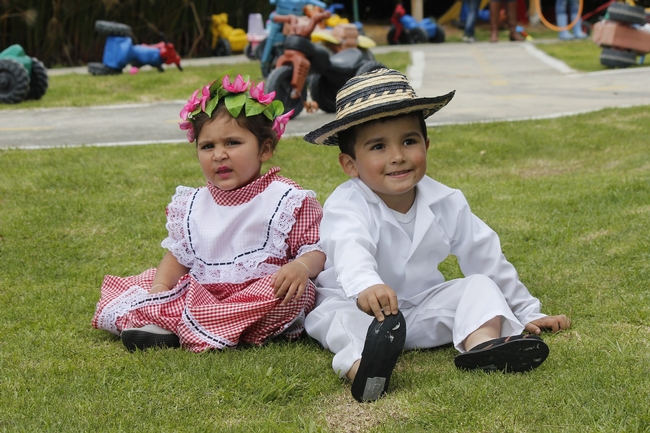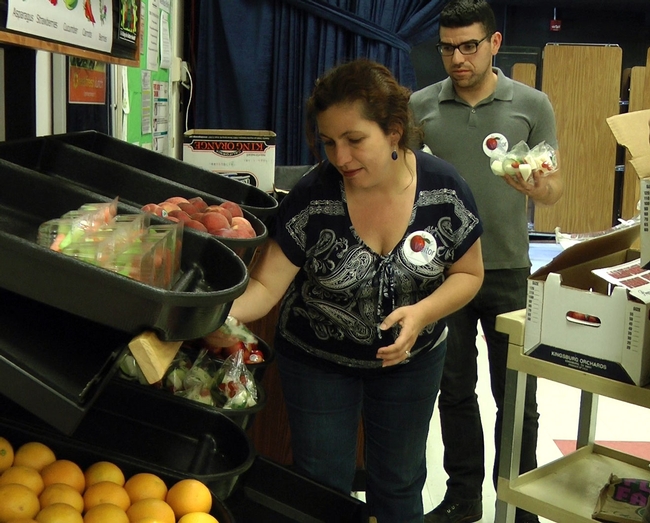Posts Tagged: Javier Miramontes
Why we celebrate Hispanic Heritage Month
Hispanic Heritage Month begins on September 15 and continues until October 15. The purpose of the celebration is to recognize the contributions and vital presence of Hispanics and Latin Americans in the United States.
President Lyndon Johnson first approved Hispanic Heritage Week in 1968 and expanded to a full month by President Ronald Reagan in 1988. Finally, Hispanic Heritage Month was officially enacted as a law on August 17, 1988.
Why is Hispanic Heritage Month held from mid-September to mid-October? It was chosen in this way to reserve two significant dates for Spanish-speaking countries. On the one hand, Independence Day is celebrated in countries such as Mexico, Chile, and five Central American nations (Guatemala, Honduras, Nicaragua, El Salvador, and Costa Rica).
Also, Columbus Day or Día de la Raza was commemorated, a date celebrated more by Italian-Americans than Spanish-speaking immigrants.
Hispanics and Latinos in the United States are getting stronger every day; it is undeniable. But they are more recognized for their culinary richness and the attractiveness of their rhythms, such as Mariachi, salsa, cumbia, mambo, and merengue, than for their essential contributions the professional level. Although, at the national level, there are all kinds of professionals who, with their work, have contributed to the cultural, social, and economic wealth of this country.
Hispanics who have helped improve our lives range from an astronaut to a winner of the Nobel Prize in Physics.
Luis Walter Alvarez, born in Mexico and naturalized American, was an experimental physicist, inventor, and professor who was awarded the Nobel Prize in Physics in 1968.
Franklin Ramón Chang Díaz is a Costa Rican mechanical engineer, naturalized American, physicist, and former NASA astronaut.
Ellen O. Ochoa is an engineer born in Los Angeles, CA, to Mexican parents, who became the first Hispanic woman to travel to space and was a former director of the Johnson Space Center.
Did you know that, according to the Census Bureau, there are 60 million Hispanics in the country? And that more than half live in three states: California, Texas and Florida? Two-thirds of Hispanics in the United States have their origins in Mexico, followed by Puerto Rico (9.5%) San Salvador (3.8%), and Cuba (3.6%). The rest come from the twelve countries where Spanish is the official language.
According to the Census Bureau, college enrollment has increased over the past decade, and 49% of Hispanic high school graduates enrolled in a university. The U.S. Department of Education recognizes six University of California campuses as institutions serving Hispanic students, including UC Irvine, while UC Merced is one of the universities in the country with the highest percentage of Hispanic students.
UC Agriculture and Natural Resources joins the celebration
This year UC ANR the celebration by recognizing three Latino professionals who serve their communities while always upholding UC ANR's public values of academic excellence, honesty, integrity, and community service.
Claudia Diaz - 4-H youth development advisor for Riverside and San Bernardino counties. Claudia has received numerous awards and recognitions for her work with underprivileged youths in urban areas. She has been with UC ANR for five years.
Sonia Ríos - Subtropical horticulture advisor for Riverside and San Diego counties. Since an early age, Sonia knew her future was in agriculture, her grandfather and her father worked in agriculture and taught her the love for nature and the fields. She has been with UC ANR for almost nine years.
Javier Miramontes - Nutrition program supervisor for Fresno County. Javier enjoys the opportunity his work gives him to serve the community where he grew up. He finds it very rewarding to teach parents, senior citizens, and Highschool students about the importance of a healthy diet and how to create a sustainable environment. He has been with UCANR for over five years.
UCCE gets local farm products into children's meals
The San Joaquin Valley produces fruits and vegetables for the nation. Why are the school children living here being deprived of this healthful and delicious bounty?
That’s the question Terri Spezzano asked when she was hired to be the nutrition, family and consumer sciences advisor for UC Cooperative Extension in Stanislaus County six years ago. She made it her mission to get fresh local food in the hands of the county’s youth.
“Kids are eating canned peaches that have come from orchards next to their schools, been shipped sometimes overseas and then back again,” Spezzano said. “That’s amazing to me, when they could walk out the door and literally pull one off the tree. It doesn’t make sense.”
When Spezzano first approached farmers for donations of fresh fruits and vegetables, they balked.
“They would say, ‘Oh, kids won’t eat my vegetables,’” Spezzano recounted. “But it’s been great to watch kids try things like rainbow chard, spinach and bok choy. It turns out, they like it a lot.”
The Stanislaus County farm-to-school nutrition program contains three primary components:
Nutrition education in the classroom
Working with a six-member team of nutrition educators, Spezzano created a unique classroom education series that focuses on crops grown in the county and uses a newsletter to convey information about the local farmers who grow them. Fresh produce and newsletters are delivered each month to classrooms, and children taste the produce with their teachers, learn fun trivia and nutrition facts, and then read about farmers, some who hail from families that have been part of the community for generations.
For example in March, Ratto Bothers Farms donated rainbow chard. For most of the students, it was the first time they tried chard. They were amazed by the vibrant colors and in letters to Ratto Bros asked how they got the colors into the leaves. The kids are now calling rainbow chard “vegetable candy," Spezzano said.
All the details, puzzles, recipes and advice are compiled in “Dirt Fresh News,” a newsletter with a name no youngster can resist. The newsletters go home with the children to inform their parents about their exposure to new produce.
“When you go to the grocery store, ask your mom, dad, grandpa, etc. to buy rainbow chard so you can have your family try it at home,” the newsletter advises. “Make a chard zombie smoothie.” (Find the recipe in the Dirt Fresh News rainbow chard issue.)
Ratto Brothers has been donating to the program since 2008. According to Dirt Fresh News, Ratto Brothers is part of a Stanislaus County family who've been in the area since 1905. The family farms more than 1,000 acres near Modesto. The company’s success through the generations has been due to the enormous pride the family takes in the quality of the herbs, fruit and vegetables that are delivered to their customers, Spezzano said.
Spezzano doesn’t shy away from introducing children to unusual vegetables. One edition of Dirt Fresh News features daikon radishes, large root vegetables with a spicy bite. The word daikon comes from the Japanese words dai (large) and kon (root). The vegetable, which looks something like a giant white carrot, can be peeled and sliced into thin chips, then eaten with dip or tossed into salad.
Spezzano said her children go to local schools and she’s part of the community. Shopping at a grocery store recently, a mother approached with a daikon.
“She asked, ‘This is what you fed my child, right? She really liked it.’” Spezzano said. “It’s been a lot of fun.”
Getting fresh fruit and vegetables into school meals
Turlock Unified School District was already making some progress in getting fresh local fruits and vegetables on school lunch and breakfast menus. Director of Child Nutrition at Turlock Unified School District, Scott Soiseth, was contracting with some farmers and trying to purchase produce at farmers markets. However, the price and logistics became obstacles. Spezzano was part of a group assembled to facilitate the process.
“Nutrition directors are responsible for as many as 50 schools,” Spezzano said. “They can’t be getting bills from a litany of small farmers and having an army of farmers’ trucks backing up to their cafeterias.”
This problem was solved by forging a key partnership with Internet start-up AgLink.com. Created by a farming family, the company facilitates direct sales of fresh fruits and vegetables from numerous small- and mid-sized farms via their e-commerce website. The schools gets real-time information about fresh fruits and vegetables in season and AgLink provides the produce all consolidated onto one bill. Soiseth said he is thrilled with the variety and quality of produce he is getting from local farmers through AgLink.com.
Special “farmers market” tasting after school
Another link in the nutrition education chain takes place after school. The UC Cooperative Extension nutrition program teamed up with the Turlock Unified School District Child Nutrition Education Program and AgLink.com to provide a farmers market experience for the children. After a brief and entertaining presentation by a UCCE nutrition educator, the children line up and fill brown paper bags with a variety of fresh fruits and vegetables.
During a recent farmers market program at Cunningham Elementary School in Turlock, children selected veggie packets that contained sliced and ready to eat green, yellow and red bell peppers, jicama, zucchini and other vegetables. Whole, but small-sized apples, peaches, nectarines, oranges and Asian pears were available for the taking.
“It’s a way to get kids excited about the produce they’re getting at school,” said Marc Sanchez, UCCE nutrition educator in Stanislaus and Merced counties.
No child is forced to eat fruits and vegetables, but they are encouraged to join the “two-bite club,” Sanchez said.
“The two-bite club is for those daring foodies that see something they are a little reluctant to try, but they take two bites. The first bite, they may not like it. Maybe the second bite will be something they like,” Sanchez said. “Regardless of their reaction to it, whether they like it or not, being brave enough to explore the culinary world by trying two bites forever gets them in the two-bite club.”
See more about the after school farmers market in the video below:


